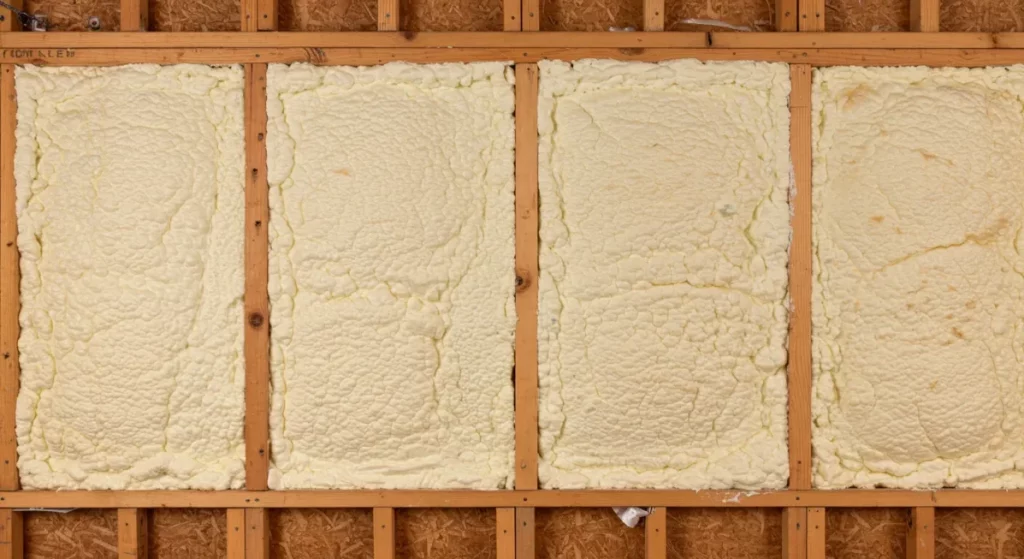
Spray foam insulation significantly reduces the risk of mold and moisture damage by forming an airtight barrier that limits water vapor movement and condensation. This is particularly effective in Seattle, where damp conditions and frequent rainfall create ideal conditions for mold growth in uninsulated or poorly sealed structures.
Closed-cell spray foam resists water infiltration while providing a high R-value per inch. Open-cell variants offer vapor permeability but still seal out ambient moisture when applied correctly. Combined with air-sealing capabilities, spray foam minimizes cold surfaces where condensation might form, which helps prevent mold colonies from developing.
This article provides practical insight into how spray foam addresses these issues in the Seattle climate. It includes technical comparisons, moisture control data, region-specific performance outcomes, and expert installation factors based on firsthand experience.
Seattle’s high humidity, coastal air, and prolonged rainy seasons introduce moisture through walls, attics, and crawlspaces. Without adequate vapor control and thermal insulation, indoor surfaces cool below dew point, triggering condensation. Combined with organic materials like wood framing or drywall, these surfaces become breeding grounds for mold.
Once moisture is trapped and surfaces remain damp for 24–48 hours, airborne spores can anchor and spread. In most Seattle basements and attics, this cycle repeats seasonally unless broken by continuous vapor barriers or insulation.
| Feature | Spray Foam (Closed-Cell) | Spray Foam (Open-Cell) | Traditional Fiberglass/Cellulose |
|---|---|---|---|
| Vapor Barrier | Yes (acts as Class II vapor retarder) | No (permeable, requires barrier) | No |
| Air Sealing | Excellent | Good | Poor |
| Water Absorption | Low | Moderate | High |
| Mold Resistance | High (inert and closed) | Moderate (can retain vapor) | Low |
| R-Value per Inch (Seattle) | 6.5–7.0 | 3.5–4.0 | 2.2–3.5 |
| Metric | Closed-Cell Foam | Open-Cell Foam |
|---|---|---|
| Water Vapor Permeance (perm) | 0.8–1.2 @ 1″ thick | 10–15 @ 3.5″ thick |
| R-Value @ 40°F | 6.8/in | 3.7/in |
| Compressive Strength | 25 psi | 5 psi |
| Dimensional Stability | Excellent | Moderate |
Bonus Tip: Closed-cell foam performs well in unvented attics and crawlspaces in Seattle homes. Always verify substrate dryness before applying to avoid sealing in moisture.

In Seattle, attic insulation often degrades due to temperature swings and moisture. Spray foam applied to the underside of roof decks prevents humid air from condensing on wood framing.
Closed-cell foam installed on foundation walls and rim joists blocks both ground moisture and humid air. This reduces fungal activity and structural decay over time.
Retrofit applications in older homes can seal leaky walls and prevent moisture from entering through siding, gaps, and joints.
Bonus Tip: Combine spray foam with proper drainage and exterior waterproofing for long-term basement mold protection.
Cascadia Spray Foam of Seattle has applied open- and closed-cell insulation in over 700 residential and commercial projects across the Puget Sound. Consistent findings include:
Provides a rigid, moisture-resistant barrier with high thermal performance. Ideal for basements, crawlspaces, and exterior walls.
Seals large voids and irregular framing cavities. Best for conditioned attic spaces and sound dampening.
Prevents warm, moist indoor air from reaching cold roof decks and condensing.
Controls ground-source humidity and enhances structural lifespan in damp environments.
Where should spray foam be used to prevent mold?
Use closed-cell foam in basements, crawlspaces, and rim joists. Use open-cell foam in attics and above-grade walls where drying potential is higher.
Does spray foam trap moisture inside walls?
Only if applied to already-wet materials. Professional moisture checks before installation are essential.
Can I add spray foam over existing insulation?
Not recommended. Remove old material to avoid trapping moisture and compromising performance.
How long does it take for spray foam to reduce indoor humidity?
Closed-cell foam begins reducing humidity levels within days. Full equilibrium depends on home ventilation.
For property owners dealing with damp basements, musty attics, or persistent mold, insulation choices matter. Cascadia Spray Foam of Seattle delivers solutions backed by field data and regional expertise.
Contact Information: Phone: (425) 386-3500 Email: [email protected]
How durable is spray foam in wet climates like Seattle?
Closed-cell foam maintains its properties for decades, resisting degradation from moisture exposure.
What safety precautions are taken during spray foam installation?
Installers wear respirators and isolate work zones. Areas are reoccupied only after curing and ventilation.
Is there any maintenance required after installation?
Minimal. Monitor for leaks or mechanical damage. No routine reapplication is needed.
Can spray foam be used in historic homes?
Yes, with proper review. Applications often need to follow local preservation guidelines.
What’s the difference in cost between open-cell and closed-cell foam?
Closed-cell is more expensive due to density and performance but often pays off in moisture control and durability.